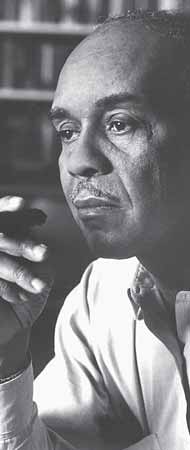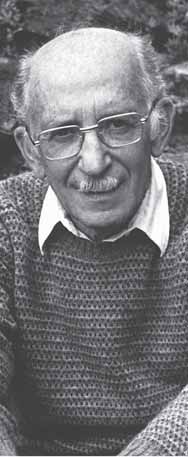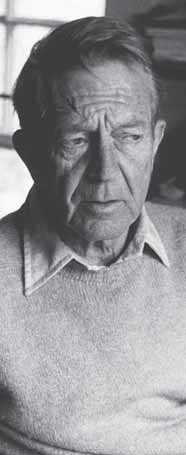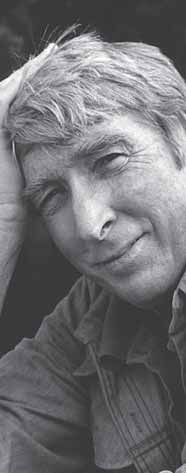lupus, a blood disease. Still, she
102


refused sentimentality, as is evi-
lege, he studied anthropology and
dent in her extremely humorous
sociology, which greatly influenced
yet bleak and uncompromising sto-
his writing. He once expressed a
ries.
profound debt to Theodore Dreiser
Unlike Katherine Anne Porter,
for his openness to a wide range of
Eudora Welty, and Zora Neale
experience and his emotional
Hurston, O’Connor most often held
engagement with it. Highly respect-
her characters at arm’s length,
ed, Bellow received the Nobel Prize
revealing their inadequacy and silli-
for Literature in 1976.
ness. The uneducated southern
Bellow’s early, somewhat grim
characters who people her novels
existentialist novels include
often create violence through
Dangling Man (1944), a Kafkaesque
superstition or religion, as we see
study of a man waiting to be drafted
in her novel Wise Blood (1952),
into the army, and The Victim
about a religious fanatic who estab-
(1947), about relations between
lishes his own church.
Jews and Gentiles. In the 1950s, his
ometimes violence arises out
vision became more comic: He
of prejudice, as in “The
used a series of energetic and
SDisplaced Person” (1955),
adventurous first-person narrators
about an immigrant killed by igno-
in The Adventures of Augie March
rant country people who are threat-
(1953) — the study of a Huck Finn-
ened by his hard work and strange
like urban entrepreneur who
ways. Often, cruel events simply
becomes a black marketeer in
happen to the characters, as in
Europe — and in Henderson the
“Good Country People” (1955), the
Rain King (1959), a brilliant and
story of a girl seduced by a man who
exuberant serio-comic novel about
steals her artificial leg.
a middle-aged millionaire whose
The black humor of O’Connor
unsatisfied ambitions drive him to
links her with Nathanael West and
Africa.
Joseph Heller. Her works include
Bellow’s later works include
RALPH ELLISON
short story collections A Good
Herzog (1964), about the troubled
Man Is Hard To Find (1955), and
life of a neurotic English professor
Everything That Rises Must
who specializes in the idea of the
Converge (1965); the novel The
romantic self; Mr. Sammler’s Planet
Violent Bear It Away (1960); and a
(1970); Humboldt’s Gift (1975); and
volume of letters, The Habit of
the autobiographical The Dean’s
Being (1979). The Complete Stories
December (1982).
came out in 1971.
In the late 1980s, Bellow wrote
two novellas in which elderly pro-
Saul Bellow (1915-2005)
tagonists search for ultimate veri-
Born in Canada and raised in
ties, Something To Remember Me
Chicago, Saul Bellow was of
By (1991) and The Actual (1997).
Russian-Jewish background. In col-
Photo © Nancy Crampton
His novel Ravelstein (2000) is a
103

veiled account of the life of
stories in collections such as The
Bellow’s friend Alan Bloom, the
Magic Barrel (1958), Idiots First
best-selling author of The Closing
(1963), and Rembrandt’s Hat
of the American Mind (1987), a
(1973), he conveyed — more than
conservative attack on the academy
any other American-born writer —
for a perceived erosion of stan-
a sense of the Jewish present and
dards in American cultural life.
past, the real and the surreal, fact
Bellow’s Seize the Day (1956) is
and legend.
a brilliant novella centered on a
Malamud’s monumental work —
failed businessman, Tommy
for which he was awarded the
Wilhelm, who is so consumed by
Pulitzer Prize and National Book
feelings of inadequacy that he
Award — is The Fixer. Set in Russia
becomes totally inadequate — a
around the turn of the 20th century,
failure with women, jobs,
it is a thinly veiled look at an actual
machines, and the commodities
case of blood libel — the infamous
market, where he loses all his
1913 trial of Mendel Beiliss, a dark,
money. Wilhelm is an example of
anti-Semitic blotch on modern his-
the schlemiel of Jewish folklore —
tory. As in many of his writings,
one to whom unlucky things
Malamud underscores the suffering
inevitably happen.
of his hero, Yakob Bok, and the
struggle against all odds to endure.
Bernard Malamud
(1914-1986)
Isaac Bashevis Singer
Bernard Malamud was born in
(1904-1991)
New York City to Russian-Jewish
Nobel Prize-winning novelist and
immigrant parents. In his second
short story master Isaac Bashevis
novel, The Assistant
(1957),
Singer — a native of Poland who
Malamud found his characteristic
immigrated to the United States in
themes — man’s struggle to sur-
1935 — was the son of the promi-
vive against all odds, and the ethi-
nent head of a rabbinical court in
cal underpinnings of recent Jewish
BERNARD MALAMUD
Warsaw. Writing in Yiddish all his
immigrants.
life, he dealt in mythic and realistic
alamud’s first published
terms with two specific groups of
work was The Natural
Jews — the denizens of the Old
M(1952), a combination of
World shtetls (small villages) and
realism and fantasy set in the myth-
the ocean-tossed 20th-century emi-
ic world of professional baseball.
grés of the pre-World War II and
Other novels include A New Life
postwar eras.
(1961), The Fixer (1966), Pictures
Singer’s writings served as book-
of Fidelman (1969), and The
ends for the Holocaust. On the one
Tenants (1971).
hand, he described — in novels such
Malamud also was a prolific mas-
as The Manor (1967) and The Estate
ter of short fiction. Through his
Photo © Nancy Crampton
(1969), set in 19th-century Russia,
104

and The Family Moskat (1950),
of his role as a mediator between
focused on a Polish-Jewish family
the Russian and American literary
between the world wars — the
worlds; he wrote a book on Gogol
world of European Jewry that no
and translated Pushkin’s Eugene
longer exists. Complementing these
Onegin. His daring, somewhat
works were his writings set after the
expressionist subjects helped
war, such as Enemies, A Love Story
introduce 20th-century European
(1972), whose protagonists were
currents into the essentially realist
survivors of the Holocaust seeking to
American fictional tradition.
create new lives for themselves.
Nabokov’s tone, partly satirical and
partly nostalgic, also suggested a
Vladimir Nabokov
new serio-comic emotional regis-
(1889-1977)
ter made use of by writers such as
ike Singer, Vladimir Nabokov
Thomas Pynchon, who combines
was an Eastern European immi-
the opposing notes of wit and fear.
Lgrant. Born into an affluent
family in Czarist Russia, he came to
John Cheever (1912-1982)
the United States in 1940 and
John Cheever often has been
gained U.S. citizenship five years
called a “novelist of manners.” He
later. From 1948 to 1959, he taught
is also known for his elegant, sug-
literature at Cornell University in
gestive short stories, which scruti-
upstate New York; in 1960 he moved
nize the New York business world
permanently to Switzerland.
through its effects on the busi-
Nabokov is best known for his
nessmen, their wives, children, and
novels, which include the autobio-
friends.
graphical Pnin (1957), about an
A wry melancholy and never quite
ineffectual Russian emigré profes-
quenched but seemingly hopeless
sor, and Lolita (U.S. edition, 1958),
desire for passion or metaphysical
about an educated, middle-aged
certainty lurks in the shadows of
European who becomes infatuated
Cheever’s finely drawn, Chekhovian
with a 12-year-old American girl.
JOHN CHEEVER
tales, collected in The Way Some
Nabokov’s pastiche novel, Pale Fire
People Live (1943), The House-
(1962), another successful venture,
breaker of Shady Hill (1958), Some
focuses on a long poem by an imag-
People, Places, and Things That Will
inary dead poet and the commen-
Not Appear in My Next Novel
taries on it by a critic whose writ-
(1961), The Brigadier and the Golf
ings overwhelm the poem and take
Widow (1964), and The World of
on unexpected lives of their own.
Apples (1973). His titles reveal his
Nabokov is an important writer
characteristic nonchalance, play-
for his stylistic subtlety, deft satire,
fulness, and irreverence, and hint
and ingenious innovations in form,
at his subject matter.
which have inspired such novelists
Cheever also published several
as John Barth. Nabokov was aware
Photo © Nancy Crampton
novels — The Wapshot Scandal
105

(1964), Bullet Park (1969), and
(l988). Updike creates an alter ego
Falconer (1977) — the last of
— a writer whose fame ironically
which was largely autobiographical.
threatens to silence him — in
another series of novels: Bech: A
John Updike (1932- )
Book (l970), Bech Is Back (1982), John Updike, like Cheever, is also
and Bech at Bay (1998).
regarded as a writer of manners
pdike possesses the most
with his suburban settings, domes-
brilliant style of any writer
U
tic themes, reflections of ennui
today, and his short stories
and wistfulness, and, particularly,
offer scintillating examples of
his fictional locales on the eastern
its range and inventiveness.
seaboard of the United States, in
Collections include The Same Door
Massachusetts and Pennsylvania.
(1959), The Music School (1966),
Updike is best known for his five
Museums and Women (1972), Too
Rabbit books, depictions of the
Far To Go (1979), and Problems
life of a man — Harry “Rabbit”
(1979). He has also written several
Angstrom — through the ebbs and
volumes of poetry and essays.
flows of his existence across four
decades of American social and
J.D. Salinger (1919- )
political history. Rabbit, Run (1960)
A harbinger of things to come in
is a mirror of the 1950s, with
the 1960s, J.D. Salinger has por-
Angstrom an aimless, disaffected
trayed attempts to drop out of soci-
young husband. Rabbit Redux
ety. Born in New York City, he
(1971) — spotlighting the counter-
achieved huge literary success with
culture of the 1960s — finds
the publication of his novel The
Angstrom still without a clear goal
Catcher in the Rye (1951), centered
or purpose or viable escape route
on a sensitive 16-year-old, Holden
from the banal. In Rabbit Is Rich
Caulfield, who flees his elite board-
(1981), Harry has become a pros-
ing school for the outside world of
perous businessman during the
adulthood, only to become disillu-
1970s, as the Vietnam era wanes.
sioned by its materialism and
JOHN UPDIKE
The final novel, Rabbit at Rest
phoniness.
(1990), glimpses Angstrom’s rec-
When asked what he would like to
onciliation with life, before his
be, Caulfield answers “the catcher
death from a heart attack, against
in the rye,” misquoting a poem by
the backdrop of the 1980s. In
Robert Burns. In his vision, he is a
Updike’s 1995 novella Rabbit
modern version of a white knight,
Remembered, his adult children
the sole preserver of innocence. He
recall Rabbit.
imagines a big field of rye so tall
Among Updike’s other novels are
that a group of young children can-
The Centaur
(1963), Couples
not see where they are running as
(1968), A Month of Sundays (1975),
they play their games. He is the only
Roger’s Version (1986), and S.
Photo © Nancy Crampton
big person there. “I’m standing on
106
the edge of some crazy cliff. What I
novelist William Burroughs and
have to do, I have to catch every-
poet Allen Ginsberg.
body if they start to go over the
cliff.” The fall over the cliff is
THE TURBULENT BUT
T
equated with the loss of childhood
CREATIVE 1960s
he
innocence — a persistent theme
The alienation and stress under-
alienation and
of the era.
lying the 1950s found outward
Other works by this reclusive,
stress underlying expression in the 1960s in the
spare writer include Nine Stories
the 1950s found United States in the civil rights (1953), Franny and Zooey (1961),
movement, feminism, antiwar
outward
and Raise High the Roof Beam,
protests, minority activism, and the
expression in the
Carpenters (1963), a collection of
arrival of a counterculture whose
stories from The New Yorker maga-
1960s in
effects are still being worked
zine. Since the appearance of one
the United States through American society. Notable story in 1965, Salinger — who lives in
political and social works of the era
in the civil rights
New Hampshire — has been absent
include the speeches of civil rights
movement,
from the American literary scene.
leader Dr. Martin Luther King, Jr.,
feminism,
the early writings of feminist
Jack Kerouac (1922-1969)
antiwar protests,
leader Betty Friedan ( The
The son of an impoverished
Feminine Mystique), and Norman
minority
French-Canadian family, Jack
Mailer’s The Armies of the Night
activism, and the
Kerouac also questioned the values
(1968), about a 1967 antiwar march.
arrival of a
of middle-class life. He met mem-
The 1960s were marked by a blur-
bers of the Beat literary under-
counterculture
ring of the line between fiction and
ground as an undergraduate at
whose effects
fact, novels and reportage that has
Columbia University in New York
carried through the present day.
are still
City. His fiction was much influ-
Novelist Truman Capote (1924-
being worked
enced by the loosely autobiographi-
1984) — who had dazzled readers
cal work of southern novelist
through
as an enfant terrible of the late
Thomas Wolfe.
American society. 1940s and 1950s in such works as erouac’s best-known novel,
Breakfast at Tiffany’s (1958) —
On the Road
(1957),
stunned audiences with In Cold
Kdescribes beatniks wan-
Blood (1965), a riveting analysis of
dering through America seeking an
a brutal mass murder in the
idealistic dream of communal life
American heartland that read like a
and beauty. The Dharma Bums
work of detective fiction.
(1958) also focuses on peripatetic
At the same time, the New
counterculture intellectuals and
Journalism emerged — volumes of
their infatuation with Zen
nonfiction that combined journal-
Buddhism. Kerouac also penned a
ism with techniques of fiction, or
book of poetry, Mexico City Blues
that frequently played with the
(1959), and volumes about his life
facts, reshaping them to add to the
with such beatniks as experimental
drama and immediacy of the story
107
being reported. In The Electric Kool-Aid Acid Test who builds up a phony business empire from
(1968), Tom Wolfe (1931- ) celebrated the coun-
junk bonds, eerily forecasts Wall Street excesses
terculture wanderlust of novelist Ken Kesey
to come. His shorter, more accessible
(1935-2001); Radical Chic & Mau-Mauing the Carpenter’s Gothic (1985) combines romance Flak Catchers (1970) ridiculed many aspects of with menace. Gaddis is often linked with mid-left-wing activism. Wolfe later wrote an exuber-
western philosopher/novelist William Gass
ant and insightful history of the initial phase of (1924- ), best known for his early, thoughtful
the U.S. space program, The Right Stuff (1979), novel Omensetter’s Luck (1966), and for stories and a novel, The Bonfire of the Vanities (1987), a collected in In the Heart of the Heart of the
panoramic portrayal of American society in the
Country (1968).
1980s.
Robert Coover (1932- ) is another metafiction
As the 1960s evolved, literature flowed with the
writer. His collection of stories Pricksongs & turbulence of the era. An ironic, comic vision also Descants (1969) plays with plots familiar from came into view, reflected in the fabulism of sev-folktales and popular culture, while his novel The eral writers. Examples include Ken Kesey’s dark-Public Burning (1977) deconstructs the execu-ly comic One Flew Over the Cuckoo’s Nest (1962), tion of Julius and Ethel Rosenberg, who were
a novel about life in a mental hospital in which
convicted of espionage.
the wardens are more disturbed than the
inmates, and the whimsical, fantastic Trout
Thomas Pynchon (1937- )
Fishing in America (1967) by Richard Brautigan Thomas Pynchon, a mysterious, publicity-shun-
(1935-1984).
ning author, was born in New York and graduated
The comical and fantastic yielded a new mode,
from Cornell University in 1958, where he may
half comic and half metaphysical, in Thomas
have come under the influence of Vladimir
Pynchon’s paranoid, brilliant V and The Crying of Nabokov. Certainly, his innovative fantasies use
Lot 49, John Barth’s Giles Goat-Boy, and the themes of translating clues, games, and codes
grotesque short stories of Donald Barthelme
that could derive from Nabokov. Pynchon’s flexi-
(1931-1989), whose first collection, Come Back, ble tone can modulate paranoia into poetry.
Dr. Caligari, was published in 1964.
ll of Pynchon’s fiction is similarly structured. A This new mode came to be called metafiction
vast plot is unknown to at least one of the
A
— self-conscious or reflexive fiction that calls
main characters, whose task it then
attention to its own technique. Such “fiction
becomes to render order out of chaos and deci-
about fiction” emphasizes language and style,
pher the world. This project, exactly








